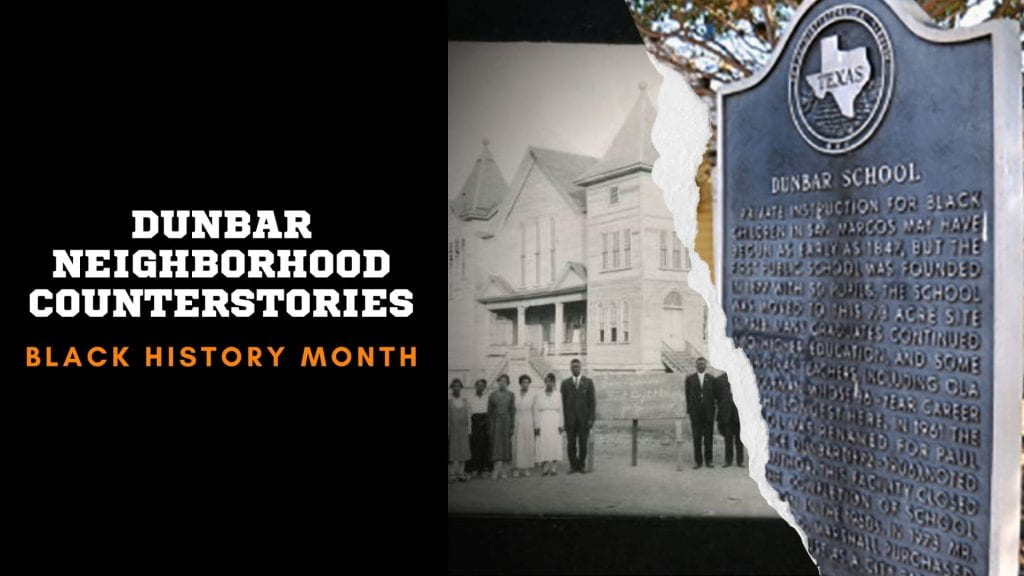The black community in San Marcos has a rich history. To research and document it, principal investigator Dr. Shetay Ashford-Hanserd (OWLS) partnered with several faculty members and students from the College of Liberal Arts, including Dr. Eric Sarmiento, Dr. Colleen Myles, Theresa Clifford, Christopher Pierce, Chad Williams, and Shadi Maleki (Geography); Dr. Aimee Kendall Roundtree and Mary-Patricia Hayton (English); Edward Ybarra (International Studies); and Sarai Benitez (Legal Studies). The team recently published a study entitled, “African American Experiences in the Historic Dunbar Neighborhood in San Marcos, Texas: A Case Study of Counter-Life Stories.”
Counter-life stories are counterstories. They are narratives and anecdotes that challenge common knowledge about historic events. The research team interviewed several longtime residents of the Dunbar neighborhood who shared how their memories of the past inform their current life and future goals for the neighborhood. The team analyzed interview transcripts and collections of primary sources such as maps and photographs to document the counter-life stories.
The team found several insights. For example, a history of racism and slavery affected the neighborhood. It was decided that the Dunbar community would be located on a floodplain. “The historical records overlook the impact of environmental racism in permitting the Dunbar neighborhood on a flood plain where flooding persists as a challenge to development and property values.” To this day, the community still battles flooding, which affects property values in the area.
Counter-life stories also revealed neighbor’s memories of segregation and integration that impact the neighborhood today. Black-owned businesses filled the need when segregation deprived the neighborhood of resources. Then, lower property taxes primed the area for gentrification, which forced many neighbors to move out. “Issues of gentrification have…made it challenging for the community to preserve cultural assets for the local community center and museum.” Now, the neighbors advocate for community revitalization, preservation, and beautification.
Counterstory research like this study helps give a voice to the people who lived through the history being told.

